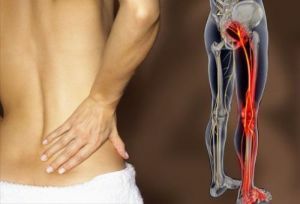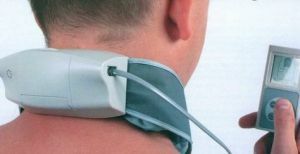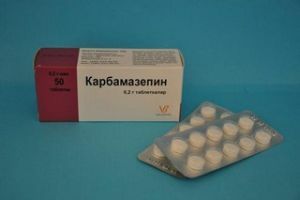 Muscle-tonic syndrome is characterized by muscular spasm arising reflexively , mainly in the development of degenerative diseases of the spine, so the nerve that innervates the outer part of the capsule of the intervertebral nerve occurs.
Muscle-tonic syndrome is characterized by muscular spasm arising reflexively , mainly in the development of degenerative diseases of the spine, so the nerve that innervates the outer part of the capsule of the intervertebral nerve occurs.
Painful muscular-tonic syndrome is a frequent manifestation of osteochondrosis of the spine.
Also, the syndrome occurs with excessive load on the back or with prolonged static loads. Since under prolonged static loads the muscles are constantly in tension, there is a violation of venous outflow and the formation of edema surrounding the muscle tissues.
Edema occurs due to muscle spasm. Spasmodic dense muscles squeeze the nerve receptors and vessels located inside the muscle fibers, which leads to the emergence of a persistent pain syndrome.
Reflexively, because of pain, muscle spasm increases even more. A vicious circle is formed between spasm, edema of tissues and pain manifestations.
However, a persistent long-term muscle spasm is transformed from a protective reaction to a pathological process and can lead to changes in muscles and impairment of their function.
The manifestation of the syndrome is characterized by muscle tension, its tightening and shortening, as a result of which the volume of movements is reduced.
There are two types of increased muscle tone:
- diffuse, characterized by local limited involvement of the muscle site;
- generalized, the flexor muscles and the extensor muscles are involved.
Increased muscle tone can be mild and pronounced. When mild hypertension - the muscle is painful on palpation, the muscle is densified.
When expressed - the muscle is very dense and painful with palpation, massage and heat lead to increased pain. Also distinguished are complicated and uncomplicated enhanced muscle tone.
Uncomplicated is characterized by the onset of pain only in the muscle, and complicated - by the pain radiating to neighboring areas. The cause of pain in a complicated version are disorders of microcirculation and compression of vascular and nerve structures.
Often, with a muscle tonic syndrome, trigger points are formed, which are a sign of myofascial pain syndrome.
 Sports balm of Dikul for joints is a wand for many athletes and people who work hard and hard.
Sports balm of Dikul for joints is a wand for many athletes and people who work hard and hard.
Why is it important to identify and start treatment for the diagnosis of lumbar spine syndrome in time?
Content of the article
- Types of the
- syndrome Signs and symptoms
- Pain management methods
- Medication
- Additional methods
- Prevention
Types of the
syndrome The most common muscular-tonic syndromes are:
- Anterior wall of thorax. Characterized by a simulation of painful manifestations in angina pectoris. It differs from angina in the absence of changes on the ECG.When the movement of pain decreases.
- Front staircase. Characterized by an increase in the tone of the stair muscle, it is possible to form a tunnel syndrome. With this syndrome, there is irritation of the neurovascular bundle and a violation of the innervation of the ulnar nerve. There is an intensification of painful manifestations during turns and extension of the head. Often, the syndrome affects one side.
- Lower oblique muscle of the head. Characterized by pain in the nape of the neck from the side of the spasmodic muscle and their amplification when turning the head.
- Small pectoralis muscle .Characterized by excessive withdrawal of the shoulder and its displacement to the ribs. As a result, the brachial
 plexus and artery are compressed, which in turn causes a violation of the blood supply and innervation of the limb.
plexus and artery are compressed, which in turn causes a violation of the blood supply and innervation of the limb. - Syndrome of pear-shaped muscle .It is characterized by compression of the sciatic nerve with the hip muscle rotated. Pain in this syndrome is similar to pain in radiculitis. Sometimes there is a feeling of numbness of the lower limb.
- The ilio-lumbar muscle .It is characterized by the presence of degenerative changes in the lumbar spine and muscle blocks in the thoracolumbar segment. It can be associated with diseases that affect the abdominal cavity and pelvic organs.
- Spade-rib syndrome .Characterized by pain in the place of projection of the upper angle of the scapula, a crunch and a decrease in the volume of movements. This syndrome arises due to degenerative changes in the cervical spine.
- A muscle syndrome that stretches the wide fascia of the thigh .It is characterized by the presence of degenerative changes in the lumbar spine, can arise reflexively, as a result of hip joint disease or changes in sacroiliac joints.
- Gastrointestinal spasms of the gastrocnemius muscle .It lasts a few seconds or a few minutes. The provoking factor is often rapid folding of the foot.
- Convulsive spasms of the back. They are characterized by localization mainly in the mid-back region. There are different lengths. In the extensor muscles, spins often exhibit trigger points.
- Lumbalia with muscular-tonic syndrome .Characterized by subacute or chronic pain in the lumbar region. It arises from the infringement of the nerve roots of the spinal cord when performing sharp inclinations, heavy lifting, trauma, etc. It can appear, both on the right, and on the left.
- Cervicalgia with muscular-tonic syndrome .Muscular tonic syndrome of the cervical region is characterized by pain in the cervical spine, accompanied by a restriction of neck mobility, soreness and spasm of the neck muscles. Sometimes there is dizziness and visual disturbance. Often, the disease occurs suddenly. In children this syndrome is almost never found.
Symptoms and Symptoms
The syndrome has characteristic symptoms, among which the main one is aching pain , capable of spreading to large areas of the patient's body.
The entire right or left side of the back can hurt, and maybe the whole cervical part with the upper back. Very rarely, usually with exacerbations, the patient is able to accurately indicate the place of pain localization.
 Since the pain is so widespread, it is very hard to tolerate. A person suffering from this syndrome is disturbed by sleep. He can not fall asleep all night in search of a less painful situation.
Since the pain is so widespread, it is very hard to tolerate. A person suffering from this syndrome is disturbed by sleep. He can not fall asleep all night in search of a less painful situation.
A very typical symptom of pronounced muscular-tonic syndrome is the presence of muscle nodules, the places of greatest soreness.
They are called trigger points. With prolonged course of the process, calcium salts are deposited in the affected muscle fibers, which manifests itself in the form of dense, painful formations.
Pain Management Methods
Treatment of muscular tonic syndrome should begin with the elimination of the cause that caused muscle spasm, that is, cure the main disease.
Therefore, treatment will depend on the pathological condition that led to it.
Medical treatment
For treatment of muscular spasm is used with drug therapy .
Assign muscle relaxants, drugs that cause muscle relaxation. They include midokalm and sirdalud. To reduce pain and relieve inflammation, use non-steroidal anti-inflammatory drugs, such as voltaren, movalis.
Sometimes local injections of anesthetics and glucocorticoids are administered to stop the formation of pulses formed at trigger points.
Additional techniques
The use of manual therapy and massage normalizes muscle tone and thus helps reduce pain.
Acupuncture helps to normalize impulses on nerve fibers, which also weakens the pain. Sometimes, to reduce the load on the spine, special orthopedic things are used.
The various physiotherapeutic procedures , such as electrophoresis and diadynamic currents, help improve blood circulation in the muscles. 
When a herniated intervertebral disc is surgical treatment.
There are special methods, for example laser thermodiscoplasty , when it is carried out irradiation of altered intervertebral discs with a special laser.
This procedure causes the growth of cartilaginous cells and thus accelerates the recovery processes. Apply this method for the treatment of pear-shaped muscle syndrome.
Prevention
To prevent painful spasms, physiotherapeutic procedures are used. After the therapy to prevent spasms and maintain muscle tone prescribed therapeutic exercise with a special set of exercises.
In case of symptoms of the syndrome, consult a doctor as soon as possible. With timely treatment, the occurrence of persistent muscle spasm can be prevented.



